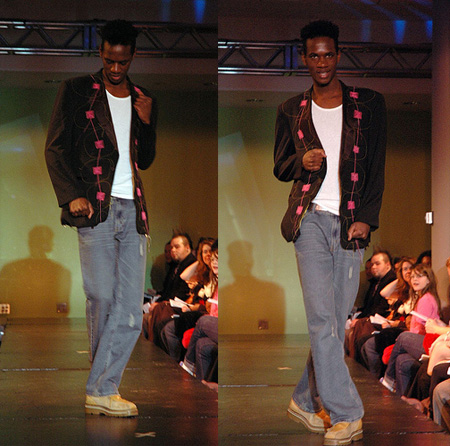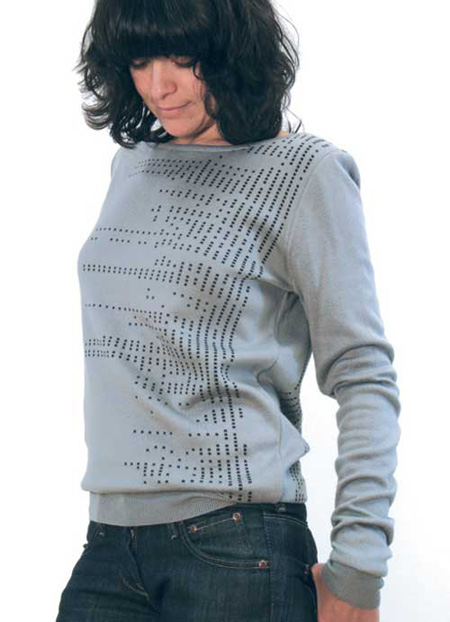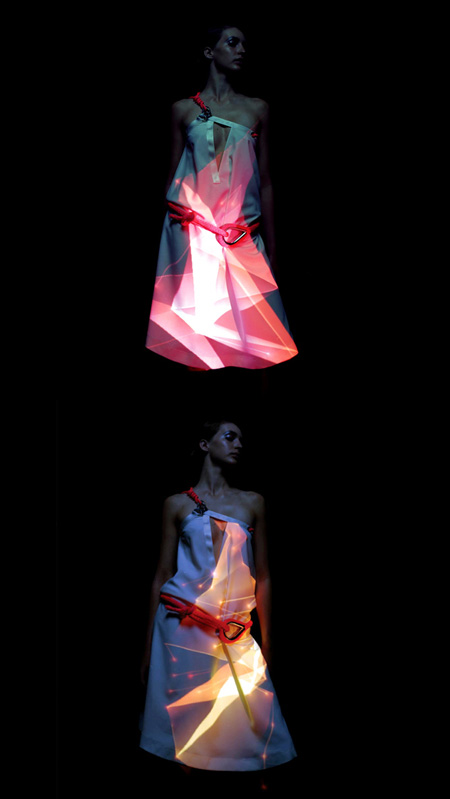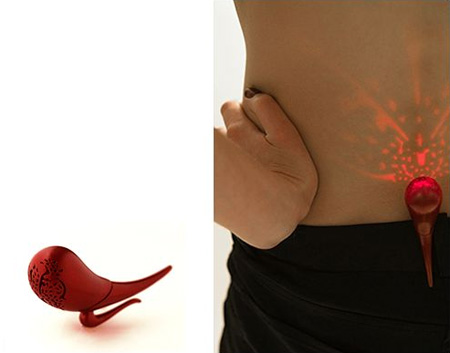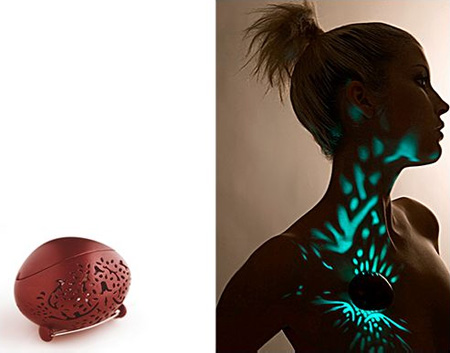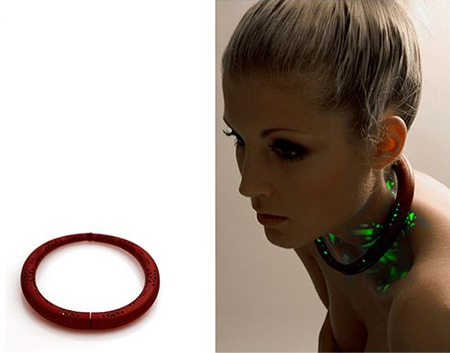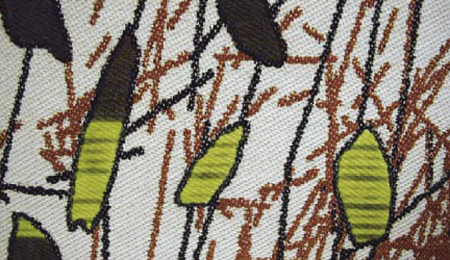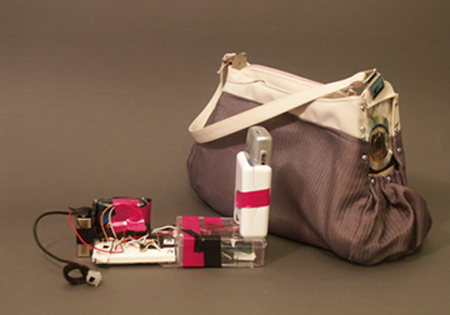 Wearable technology designers Diana Eng & Emily Albinski co-founded Black Box Nation, a fashion technology company, where they created their Blogging in Motion project during a Yahoo! hack day back in 2006. The purse has an integrated GPS and a camera that is connected to a basic stamp. It measures your movement by steps. Every 20 or so steps triggers the camera to snap a photo, which it then sends to a blog automatically via your cell phone that you presumably have clipped into the hardware.
Wearable technology designers Diana Eng & Emily Albinski co-founded Black Box Nation, a fashion technology company, where they created their Blogging in Motion project during a Yahoo! hack day back in 2006. The purse has an integrated GPS and a camera that is connected to a basic stamp. It measures your movement by steps. Every 20 or so steps triggers the camera to snap a photo, which it then sends to a blog automatically via your cell phone that you presumably have clipped into the hardware.
What's interesting about this project is the idea of wearable technology communicating with online sources such as social networking sites and blogs. Imagine being able to keep up with all of your social networking sites through passive and natural gestures.
More info on the project's team via Black Box Nation.
